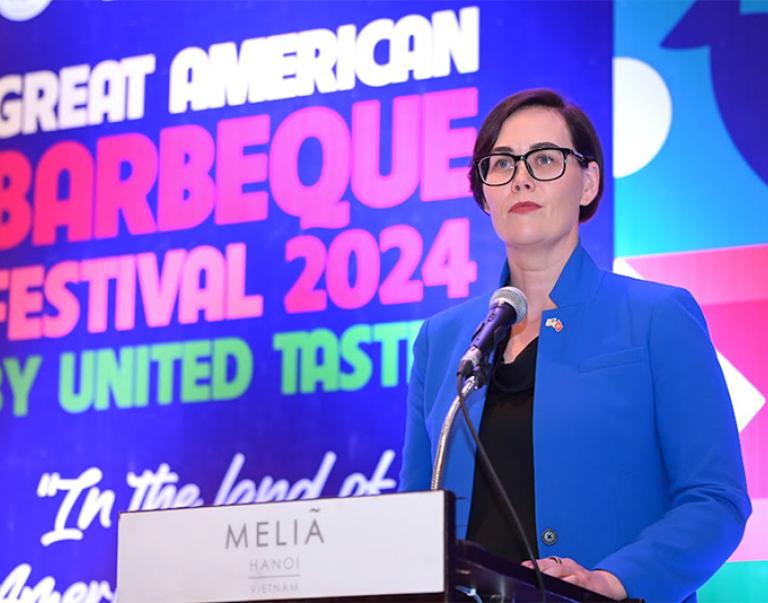WASHINGTON, Dec. 21, 2016 - Agriculture Secretary Tom Vilsack today announced that 88 high-impact projects across the country will receive $225 million in federal funding as part of the USDA's Regional Conservation Partnership Program (RCPP). In addition, partners have proposed to contribute up to an additional $500 million to improve the nation's water quality, combat drought, enhance soil health, support wildlife habitat and protect agricultural viability.
With today's announcement, the USDA's Natural Resources Conservation Service (NRCS) is investing a total of $825 million in 286 projects, bringing together more than 2,000 conservation partners who have committed an estimated $1.4 billion in financial and technical assistance. By 2018, NRCS and its partners, including Indian tribes, nonprofit organizations, state and local governments, private industry, water districts, universities and many others, will have invested at least $2.4 billion through RCPP, which was created by the 2014 Farm Bill.
"RCPP plays a critical role in connecting partners with producers to design and implement conservation solutions that benefit both natural resources and agriculture," Vilsack said. "The Farm Bill is the largest source of federal funding for private lands conservation, and RCPP is contributing innovative conservation solutions to communities across the country."
RCPP offers new opportunities for the NRCS, conservation partners and agricultural producers to work together to harness innovation, expand the conservation mission, and demonstrate the value and efficacy of voluntary, private lands conservation. The program is increasing investment in conservation from a diversity of partners, leading to cleaner and more abundant water, improved soil and air quality, enhanced wildlife habitat, and stronger rural economies.
Water quality and drought are dominant themes in this year's RCPP project list with 46 of the 88 projects focusing on water resource concerns. More than a fourth of the projects are focused on improving fish and wildlife habitat. See the full list of 2017 projects spanning the country, impacting almost every state in the nation and Puerto Rico.
In California, NRCS is investing $10 million in the Black Rascal Creek Project, which is proposed by the partnership of Merced County, Merced Irrigation District, and City of Merced. The project will provide flood protection to the communities of Merced and Franklin/Beachwood, as well as surrounding prime agricultural lands, in an area that has seen frequent and severe flooding. In addition to flood control, this multi-benefit project will address drought, water quality, soil quality, and inadequate wildlife habitat. Partners expect to triple the federal investment in the project.
NRCS is also investing $6 million in the 25,000-square-mile Maine Aquatic Connectivity Restoration Project, which will restore some of the state's highest-value aquatic networks that have been impacted by habitat fragmentation and degradation caused by road-stream crossings. Led by The Nature Conservancy and 18 other partners, the project will use Stream Smart design and installation to improve habitat and aquatic organism passage and reduce the impacts of increasingly volatile storm-water flows. The tribal, state, federal, nonprofit, and private landowner partnership will more than double the NRCS investment.
In Iowa, NRCS is investing $900,000 in the Fox River Water Quality Project, one of the longest running watershed projects in Iowa. The river has been on Iowa's and Missouri's impaired waters list for many years. In its 18th year, the project is committed to continued conservation efforts improving the health of the Fox River by addressing water quality, conservation, protection, and development of natural resources using voluntary programs, while providing economic opportunity. The eight partners, led by the Davis County Soil and Water Conservation District, will help producers improve water quality through conservation practices like installing grade stabilization structures, water and sediment control basins, tile outlet terraces, and cover crops.
Since 2009, USDA has invested more than $29 billion to help producers make conservation improvements, working with as many as 500,000 farmers, ranchers and landowners to protect over 400 million acres nationwide, boosting soil and air quality, cleaning and conserving water and enhancing wildlife habitat. For an interactive look at USDA's work in conservation and forestry over the course of this Administration, visit http://medium.com/usda-results.
#
USDA is an equal opportunity provider, employer and lender.



